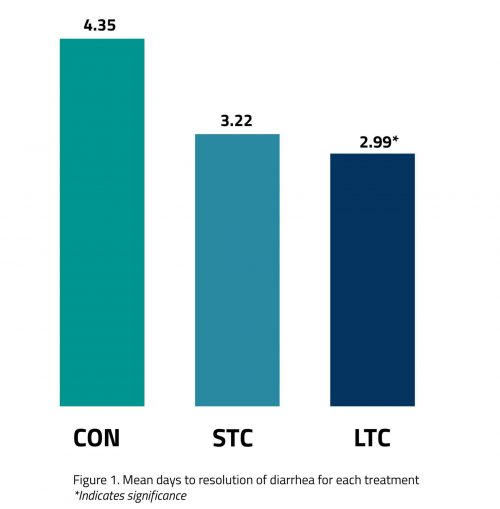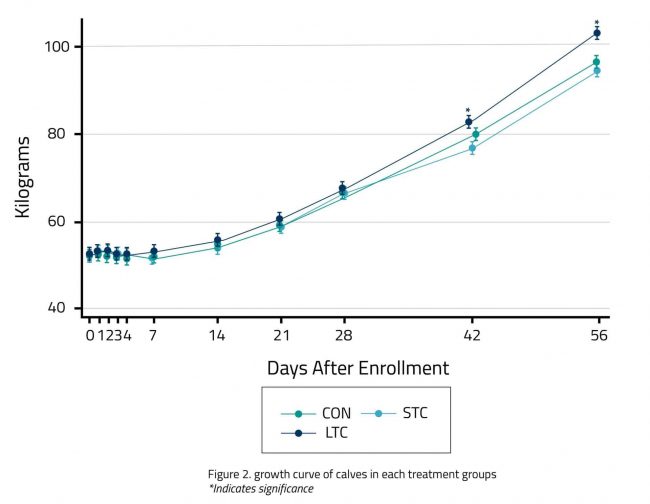Diarrhea in preweaning calves is a multifactorial disease that is contracted due to a combination of environmental, management and pathogenic factors. This is one of the reasons why it is the primary cause of morbidity and mortality as well as one of the leading causes of antimicrobial therapy in dairy calves.¹
Alone, diarrhea can have short-term and long-term consequences related to health, welfare and productivity. Additionally, the use of antimicrobials can negatively affect the calf’s gut microbial communities, leading to diminished immune function.² This combination, paired with concerns related to antimicrobial resistance, justifies the need for alternate diarrhea therapies for calves.
Exploring the benefits of colostrum
Bovine colostrum is specifically tailored to meet a calf’s need for immune function, growth and development. For centuries, bovine colostrum has been used as a treatment and preventative in humans and other species, but its benefits as a therapy for calves have yet to be explored. Its ample supply of antibodies, nutrients, hormones, growth factors, vitamins, and minerals as well as antimicrobial and anti-inflammatory properties provide several therapeutic benefits such as cell growth and reparation. The benefits of colostrum create an enticing argument that it may have the potential to act as a therapy for diarrhea in preweaning calves.
A study was completed at the University of Guelph to explore the impact of colostrum as a therapy for diarrhea in preweaned calves. It was completed at a commercial calf-raising facility in southwestern Ontario during the summer of 2021.
Over the 6-week period, 108 calves were enrolled once they had visible diarrhea. Once enrolled, each calf was randomly allocated to receive one of three treatments:
- Control (CON): Eight feedings over 4 days of 2.5 L of milk replacer at a concentration of 130 g/L,
- Short-term colostrum supplementation (STC): Four feedings over 2 days of 2.5 L of a mixture of milk replacer and colostrum replacer, each with a concentration of 65 g/L, followed by four feedings over 2 days of 2.5 L of milk replacer at a concentration of 130 g/L,
- Long term colostrum supplementation (LTC): Eight feedings over 4 days of 2.5 L of a mixture of milk replacer and colostrum replacer, each with a concentration of 65 g/L. Several variables were recorded during this study including serum immunoglobulin G concentration, severity of diarrhea at enrollment, fecal and respiratory scores, and weight gain to evaluate their contributing effects on diarrhea resolution.
Calves allocated to the LTC treatment group showed several significant and positive results. When compared to the CON group, calves in the LTC group had a reduced duration and severity of diarrhea.
Figure 1 illustrates the mean time to resolution of diarrhea across treatment groups. Several variables influenced diarrhea resolution; an increased body weight at the onset of diarrhea and the number of days to enrollment since facility arrival reduced the time to resolution of diarrhea. However, calves infected with two or more different pathogens and calves enrolled with a more severe fecal score on a scale of 0-3, had an increased time to resolution.

Calves in the LTC group also showed improved growth rates compared to CON calves, gaining 98 g/day more. Figure 2 illustrates the growth curves of each treatment with calves in the LTC group being significantly larger on days 42 and 56 following enrollment.

Results from this study indicate that feeding a low dose of colostrum over an extended period can effectively minimize the days to resolution of diarrhea and improve average daily gain in preweaned calves. Future research should explore the most optimal dose and duration of the treatment that can be effectively and practically used by producers.
Article provided by SCCL. Written by Havie Carter, B.Sc.(Agr.) M.S.c Candidate, Department of Population Medicine, University of Guelph, [email protected].
References
- Urie, N. J.; Lombard, J. E.; Shivley, C. B.; Kopral, C. A.; Adams, A. E.; Earleywine, T. J.; Olson, J. D.; Garry, F. B. Preweaned Heifer Management on US Dairy Operations: Part V. Factors Associated with Morbidity and Mortality in Preweaned Dairy Heifer Calves. Dairy Sci. 2018, 101 (10), 9229–9244. https://doi.org/10.3168/jds.2017-14019.
- Oultram, J., E. Phipps, A.G.V. Teixeira, C. Foditsch, M.L. Bicalho, V.S. Machado, R.C. Bicalho, and G. Oikonomou. 2015. Effects of antibiotics (oxytetracycline, florfenicol or tulathromycin) on neonatal calves’ faecal microbial diversity. Vet. Rec. 117:598. doi:10.1136/vr.103320.


